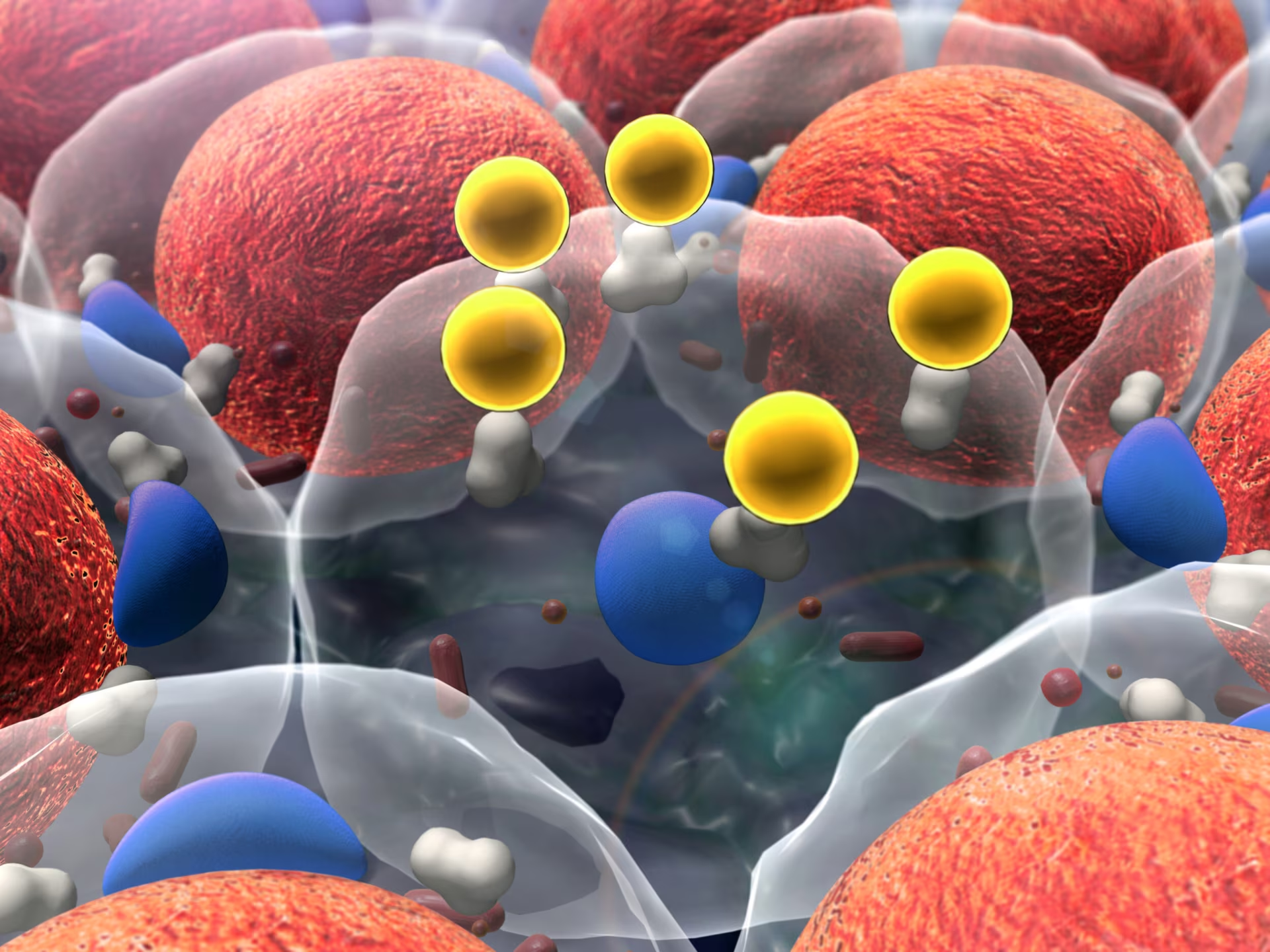Treatment Strategies
Treatment Strategies
The National Cholesterol Education Program Adult Treatment Panel III (NCEP ATP III) guidelines for managing hypertriglyceridemia are based on its severity and the overall lipid profile. For persons with borderline-high triglyceride levels (150–199mg/dL), a parameter for the metabolic syndrome, NCEP guidelines recommend the lifestyle interventions of diet change for weight loss and increased physical activity. Therapy in such patients is aimed primarily at lowering LDL. If triglyceride levels remain high (200–499mg/dL), lowering non-HDL cholesterol (LDL plus VLDL cholesterol) is recommended after the LDL goal is reached. Pharmacotherapy directed at reducing triglyceride levels is recommended for patients who fail to achieve non-HDL cholesterol goal on statin therapy. In patients with triglyceride levels of 500mg/dL or more and in the absence of symptomatic vascular disease, triglyceride-lowering becomes the primary goal because of the risk for pancreatitis. Fibric acid derivatives (fibrates) are among the pharmacotherapies recommended by NCEP III guidelines to treat persons with triglyceride levels of 200–499mg/dL, especially those with metabolic syndrome. Fenofibrate is one of the most widely used fibric acid derivatives. Traditionally, the major problem with the use of fenofibrate has been its limited bioavailability, especially when taken without food. Therefore, new micronization technologies have been used to develop formulations with improved bioavailability, even in the absence of food. One such formulation is fenofibrate capsules 130mg (FF-μG 130mg), which are composed of inactive microgranules coated with micronized fenofibrate.
The Triglyceride Reduction in Metabolic Syndrome Study
The Triglyceride Reduction in Metabolic Syndrome (TRIMS) study evaluated the food-related efficacy of FF-μG 130mg in patients with fasting triglyceride levels of 300–1,000mg/dL and at least three features of the metabolic syndrome. In this randomized doubleblind multicenter study, patients were randomized to receive FF-μG 130mg with food (n=54), FF-μG 130mg without food (n=42), or placebo (n=50) daily for eight weeks.The treatment groups were comparable in fasting triglyceride level (mean of 480mg/dL). The placebo group showed a mean increase of 0.7% in triglyceride levels from baseline to end of treatment. Comparable mean decreases in triglyceride levels were observed in the groups that received FF-μG 130mg with (36.7%) and without (36.6%) food (p<0.001 versus placebo). Comparable adverse event rates were seen in the groups treated with FF-μG 130mg, taken with (63%) or without food (61.9%) or placebo (52.0%). Over 90% of the adverse events were mild or moderate. Gastrointestinal events (diarrhea and dyspepsia) were somewhat more frequent in the groups treated with FF- μG 130mg with (31.5%) or without (26.2%) food than in the placebo group (12%). Only four patients treated with FF-μG 130mg discontinued participation due to an adverse event (gastrointestinal distress, worsening anxiety, nausea, and leg spasms/nausea).
The groups treated with FF-μG 130mg with or without food showed significant increases in alanine aminotransferase (3.77 and 11.69 U/L, respectively) and aspartate aminotransferase (3.04 and 8.70 U/L, respectively). However, increases of more than twice the upper limit of normal were only identified in five patients and all resolved at study completion. These hepaticenzyme changes were consistent with previous clinical trials of fenofibrate and, as such, the TRIMS Study revealed no new safety concerns of fenofibrate therapy. Although short-term, the TRIMS study indicates that FF-μG 130mg, taken with or without food,was effective and well tolerated in the treatment of patients with hypertriglyceridemia and the metabolic syndrome. Comparable efficacy and safety were observed whether FF-μG 130mg was taken with or without food. A fenofibrate formulation, whose effects are not dependent on food ingestion, provides greater dosing convenience and thus may improve treatment adherence.
Hypertriglyceridemia appears to be a more significant coronary artery disease (CAD) risk factor in women than in men. A retrospective analysis of the TRIMS study compared the response to fenofibrate in 56 women (37 on fenofibrate, 19 on placebo) and 88 men (59 on fenofibrate, 29 on placebo).The median placebocorrected per cent changes from baseline in triglycerides amounted to -48% in women compared with -21% in men. These results suggest women may be more responsive to the triglyceride-lowering effect of fenofibrate than men.
The Need for More Aggressive Triglyceride Management
The utility of triglyceride management in cardiovascular risk reduction is supported by evidence from primary and secondary prevention trials. In the Helsinki Heart Study, a five-year primary prevention trial involving the fibric acid derivative gemfibrozil, a 43% reduction in triglycerides was associated with a 34% reduction in CHD. The Diabetes Atherosclerosis Intervention Study was a three-year angiographic study in which persons with type 2 diabetes received randomized treatment with fenofibrate or placebo. Fenofibrate treatment significantly lowered triglycerides 28%, lowered total and LDL cholesterol, and raised HDL cholesterol. This treatment was accompanied by decreased atherosclerosis progression. In the Bezafibrate Infarction Prevention Study, treating CAD patients with bezafibrate, another fibric acid derivative, resulted in a 21% reduction in triglycerides. Patients with triglyceride levels greater than 200mg/dL showed a 40% reduction in non-fatal myocardial infarction (MI) and cardiovascular death.
Elevated triglycerides affect a considerable proportion of the US adult population. Based on the Third National Health and Nutrition Survey (NHANES III), a cross-sectional study of US adults aged 20 years or more, 30% of the 8,814 men and women evaluated had serum triglycerides levels of 150mg/dL or greater. Among persons aged 50 years or more, the proportion with serum triglyceride levels of at least 150mg/dL increased to 42.8%. Elevated triglycerides are a feature of the metabolic syndrome, a condition associated with excess CHD prevalence. In the NHANES III subset of Americans aged 50 years or more, the prevalence of triglyceride levels of at least 150mg/dL was 77.8% among individuals with the metabolic syndrome alone and 72.1% among those with both the metabolic syndrome and type 2 diabetes. The NHANES III data, which was collected between 1988 and 1994, indicate that the overall age-adjusted prevalence of the metabolic syndrome among US adults is 23.7% and increases with age.Among persons of 50 or more years of age, the prevalence of the metabolic syndrome approximates to 44%. However, due to population growth and the continuing increase in the rate of obesity, the current prevalence of the metabolic syndrome may be even higher than NHANES III estimates. Clearly, early intervention strategies, including the more aggressive management of elevated triglycerides, may improve CHD risk reduction in the growing high-risk population with the metabolic syndrome and type 2 diabetes.
Until clinical trial data dictate otherwise, lifestyle intervention remains the cornerstone of therapy when triglyceride levels are 150–199mg/dL. However, in the Baltimore Coronary Observational Long-term Study, which followed patients with CAD for 18 years, increased CHD event rates were identified at triglyceride levels exceeding 100mg/dL. That triglycerides levels above 100mg/dL are associated with both a greater likelihood of (fasting and postprandial) atherogenic phenotype and pro-inflammatory state raises the possibility that in some individuals, triglyceride management may be indicated even at triglyceride levels currently considered normal. However, before public health policy raises the priority for triglyceridelowering therapies, there must be demonstrated reduction in CHD event rates.To this end, the results of the recently completed Fenofibrate Intervention and Event Lowering in Diabetes (FIELD) and the ongoing Action to Control Cardiovascular Risk in Diabetes (ACCORD)trials are eagerly awaited, because both studies will provide new insights into the importance of triglyceride reduction (with or without LDL lowering) in CHD prevention.







